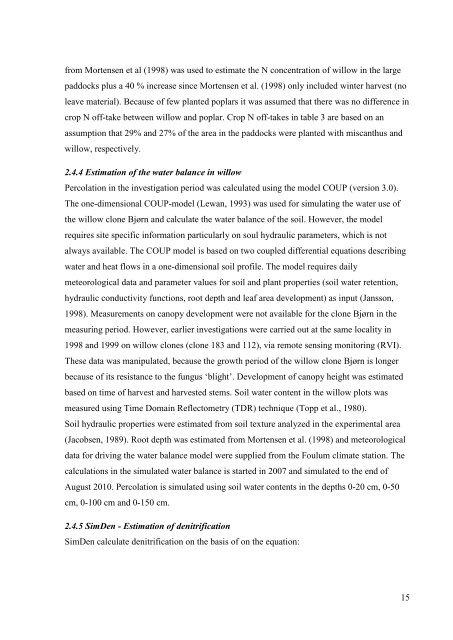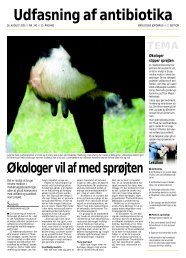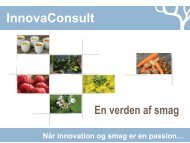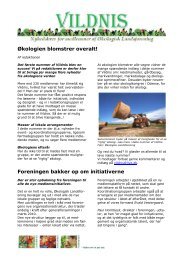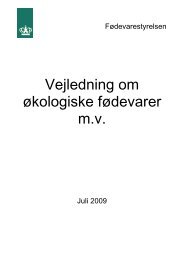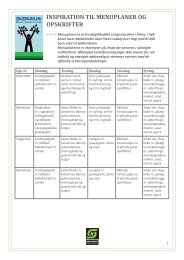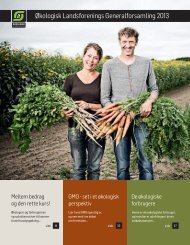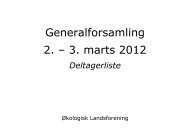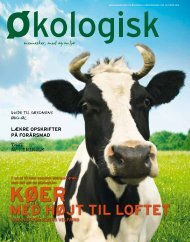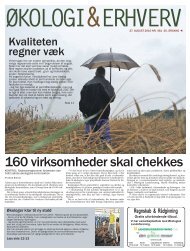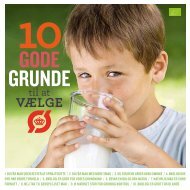Nitrogen distribution and potential nitrate leaching in a combined ...
Nitrogen distribution and potential nitrate leaching in a combined ...
Nitrogen distribution and potential nitrate leaching in a combined ...
You also want an ePaper? Increase the reach of your titles
YUMPU automatically turns print PDFs into web optimized ePapers that Google loves.
from Mortensen et al (1998) was used to estimate the N concentration of willow <strong>in</strong> the large<br />
paddocks plus a 40 % <strong>in</strong>crease s<strong>in</strong>ce Mortensen et al. (1998) only <strong>in</strong>cluded w<strong>in</strong>ter harvest (no<br />
leave material). Because of few planted poplars it was assumed that there was no difference <strong>in</strong><br />
crop N off-take between willow <strong>and</strong> poplar. Crop N off-takes <strong>in</strong> table 3 are based on an<br />
assumption that 29% <strong>and</strong> 27% of the area <strong>in</strong> the paddocks were planted with miscanthus <strong>and</strong><br />
willow, respectively.<br />
2.4.4 Estimation of the water balance <strong>in</strong> willow<br />
Percolation <strong>in</strong> the <strong>in</strong>vestigation period was calculated us<strong>in</strong>g the model COUP (version 3.0).<br />
The one-dimensional COUP-model (Lewan, 1993) was used for simulat<strong>in</strong>g the water use of<br />
the willow clone Bjørn <strong>and</strong> calculate the water balance of the soil. However, the model<br />
requires site specific <strong>in</strong>formation particularly on soul hydraulic parameters, which is not<br />
always available. The COUP model is based on two coupled differential equations describ<strong>in</strong>g<br />
water <strong>and</strong> heat flows <strong>in</strong> a one-dimensional soil profile. The model requires daily<br />
meteorological data <strong>and</strong> parameter values for soil <strong>and</strong> plant properties (soil water retention,<br />
hydraulic conductivity functions, root depth <strong>and</strong> leaf area development) as <strong>in</strong>put (Jansson,<br />
1998). Measurements on canopy development were not available for the clone Bjørn <strong>in</strong> the<br />
measur<strong>in</strong>g period. However, earlier <strong>in</strong>vestigations were carried out at the same locality <strong>in</strong><br />
1998 <strong>and</strong> 1999 on willow clones (clone 183 <strong>and</strong> 112), via remote sens<strong>in</strong>g monitor<strong>in</strong>g (RVI).<br />
These data was manipulated, because the growth period of the willow clone Bjørn is longer<br />
because of its resistance to the fungus ‘blight’. Development of canopy height was estimated<br />
based on time of harvest <strong>and</strong> harvested stems. Soil water content <strong>in</strong> the willow plots was<br />
measured us<strong>in</strong>g Time Doma<strong>in</strong> Reflectometry (TDR) technique (Topp et al., 1980).<br />
Soil hydraulic properties were estimated from soil texture analyzed <strong>in</strong> the experimental area<br />
(Jacobsen, 1989). Root depth was estimated from Mortensen et al. (1998) <strong>and</strong> meteorological<br />
data for driv<strong>in</strong>g the water balance model were supplied from the Foulum climate station. The<br />
calculations <strong>in</strong> the simulated water balance is started <strong>in</strong> 2007 <strong>and</strong> simulated to the end of<br />
August 2010. Percolation is simulated us<strong>in</strong>g soil water contents <strong>in</strong> the depths 0-20 cm, 0-50<br />
cm, 0-100 cm <strong>and</strong> 0-150 cm.<br />
2.4.5 SimDen - Estimation of denitrification<br />
SimDen calculate denitrification on the basis of on the equation:<br />
15


